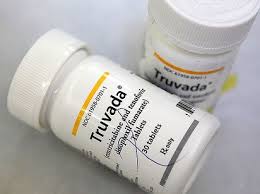 The AIDS Memorial on Instagram features remembrances and obituaries of people who died from the pandemic, which has now claimed 35.4 million lives worldwide. Yet, in the U.S., HIV prevention efforts have stalled, according to a recent press statement by the Centers for Disease Control and Prevention. Newly released data show that HIV infection rates have remained stable for several years at about 40,000 new infections annually. Some populations have seen increases, including men who have sex with men (MSM) who are black or Latino.
The AIDS Memorial on Instagram features remembrances and obituaries of people who died from the pandemic, which has now claimed 35.4 million lives worldwide. Yet, in the U.S., HIV prevention efforts have stalled, according to a recent press statement by the Centers for Disease Control and Prevention. Newly released data show that HIV infection rates have remained stable for several years at about 40,000 new infections annually. Some populations have seen increases, including men who have sex with men (MSM) who are black or Latino.
However, an often-overlooked provision of the Affordable Care Act (ACA) may soon give HIV prevention efforts a much-needed boost. Under the ACA, most health plans must provide certain preventive services and screenings without cost sharing. Eliminating co-pays and other out-of-pocket expenditures increases access to these important services, particularly for low-income persons for whom cost is a barrier to accessing needed preventive services and care.
Congress designated a panel of experts, the U.S. Preventive Services Task Force (USPSTF), to decide what preventive services and screenings should be free of cost sharing. The USPSTF has the authority to update its recommendations as new information and treatments become available. (The ACA also separately requires plans to provide certain women’s preventive services without cost sharing. Officials at the Health Resources and Services Administration contracted with the American College of Obstetricians and Gynecologists to update those qualifying screenings and services).
In 2012, the Food and Drug Administration (FDA) approved the use of Truvada – a medication used in the treatment of HIV, as Pre Exposure Prophylaxis (PrEP) to prevent HIV infection. In 2014, the CDC endorsed PrEP as an effective HIV prevention tool. Last year, the USPSTF released its draft recommendation to add PrEP to the list of preventive services that health plans must provide without cost sharing. Advocates welcomed the USPSTF recommendation, since many people who are at-risk for HIV infection cannot access PrEP.
High cost has proven to be a significant barrier preventing access to PrEP for those who need it most. For the uninsured, PrEP can be as high as $1,250/month or $15,000/year. For those with insurance, PrEP can still be prohibitively expensive, with out-of-pocket costs estimated at $6,000/year. Eliminating cost sharing for PrEP will go a long way in making this potentially life-saving prevention tool more available to those at risk for HIV.
Advocates continue the push to lower the cost of PrEP for everyone. Efforts such as #BreakthePatent argue that the federal government should exercise its “march-in” authority to produce a generic version of PrEP, which costs at little as $6 to make a month’s supply. The National Health Law Program expressed its support for this and other strategies to lower the cost of prescription drugs in comments on the Trump administration’s “blueprint” to lower prescription drug costs, and in the blogpost “What’s Missing from Trump’s Plan for Lower Rx Costs?”
Trump recently promised to make PrEP more available as part of his pledge to end AIDS by 2030. However, context matters — his administration continues to sabotage the ACA and health care access in the wake of the GOP’s failed repeal efforts last year. The Trump “plan” to end AIDS is not likely to achieve results as long as the administration undermines the ACA and threatens the health coverage of millions, including people with HIV/AIDS and those who are at risk.
One day, the HIV/AIDS pandemic will be over. Its epitaph will note the key role the ACA has played in preventing new infections and keeping people with HIV alive.

